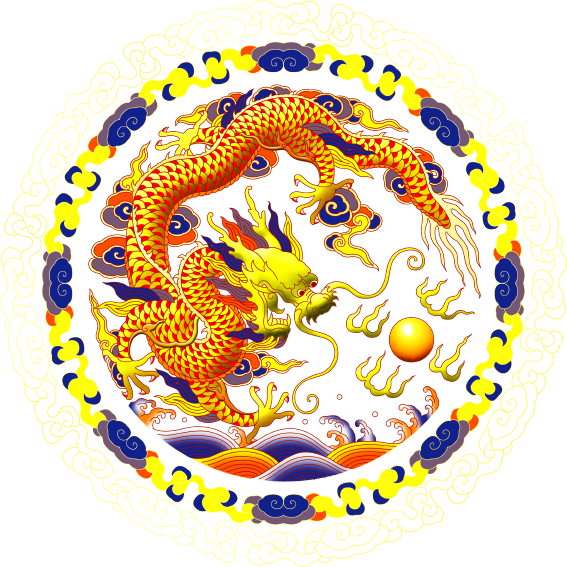
Dao Yin Alchemical Gymnastics
混元派导引术
Hun Yuan Pai’s Dao Yin
Thousands of years ago, during the distant Neolithic period of ancient China, when Chinese communities, organized in clans and tribes, lived in close communion with the surrounding nature, they faced health challenges due to their harsh living conditions. Their bodies, constantly influenced by the environment, bore the strains of cold, humidity, and the raw realities of the primitive world. In this context, during the reign of Emperor Yao, people recognized the need to find a solution to maintain the health and vitality of the population.
Observing the connection between movement and energy, individuals introduced a revolutionary practice. Drawing inspiration from the dance steps of festive celebrations, they began to perform specific movements designed to express joy and transformed them into a routine to promote blood circulation and the vital energy known as “qi.” These movements were not mere artistic choreography; they were an intuitive effort to stretch the body and guide internal energy. As these practices became ingrained in daily life, their benefits became apparent. Joints became more agile, swelling in the feet and legs diminished, and torso flexibility was restored. This initial intuitive form of calisthenics came to be known as “the great dance,” or in Chinese, “shuan dao fa,” marking the inception of an organized exercise practice for maintaining and restoring health. Suddenly, dance became a tool for healing and rejuvenating the human body.
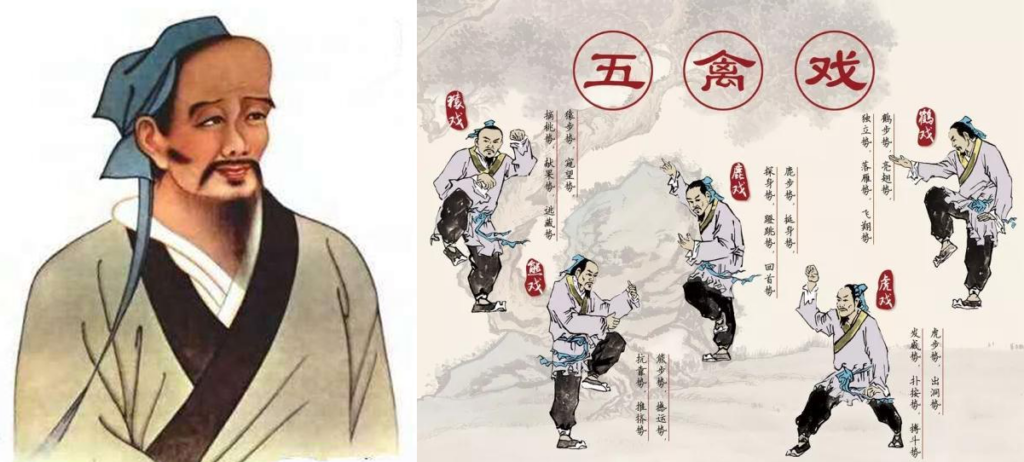
Centuries later, during the Eastern Han dynasty, an influential physician named Huá Tuó emerged. This visionary in medicine not only left an indelible mark by being the first to use anesthesia in surgery in China but also transformed the intuitive ancient calisthenics. He created a series of therapeutic movements grounded in his extensive knowledge, which he called “the dance of the five animals.” These movements imitated the behavior and movements of five different animals and became a powerful form of body exercise and health improvement. In his quest to perfect this practice, Dr. Huá Tuó decided to rename the old “great dance” to something more descriptive: “guiding energy and stretching the body,” or “Dao Yin.” Thus, medically supervised Dao Yin evolved into a comprehensive method of exercises centered on stretching and guiding vital energy, taking the ancient dance to a new level.
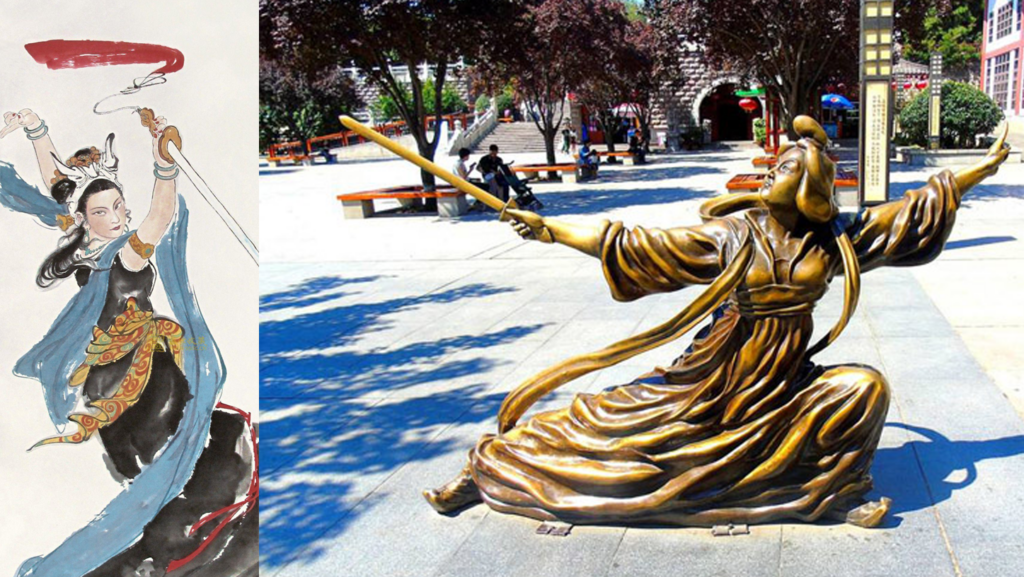
The story continued its course, and during the Tang dynasty, the original “great dance” – the intuitive calisthenics – expanded further and transformed into a calisthenics form that required great physical skill. It was during this time that the “sword dance” was born, also known as the “sword dance of the Luo River city,” originating from present-day Henan province. This gymnastic version of the sword dance was created by Gong Sun Da Niang, a talented dancer in the Tang Palace during the prosperous Kai Yuan period. While these dance movements were elegant and fluid, they were not a therapeutic form of calisthenics. However, they provided excellent physical and mental exercise. Thus, over the centuries, Chinese calisthenics evolved from being a mere dance into a comprehensive exercise practice that nourished both the body and the soul.
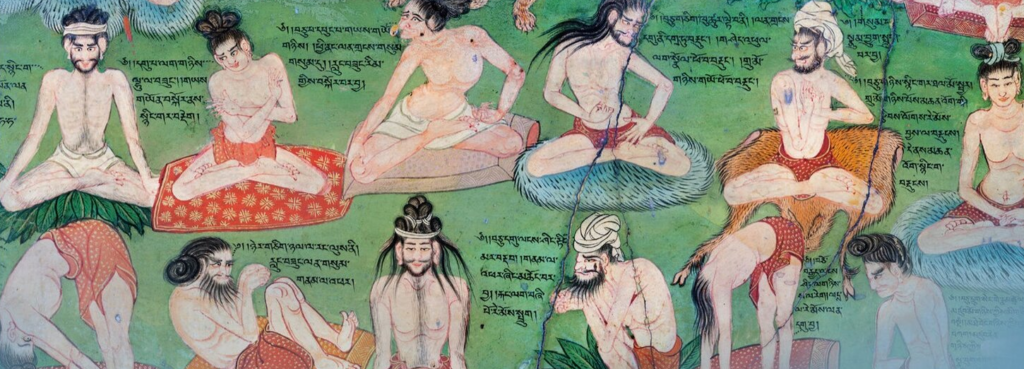
During the magnificent Song dynasty, an interesting cultural exchange took place in ancient China. It was a fascinating moment in history when the beliefs and practices of different philosophies converged and merged, leaving a lasting imprint on how people cared for their bodies and minds. It was then that Buddhist monks introduced two variants of yoga to China: Indian Ashtanga Yoga and Tibetan Yoga, known as “fruul ‘khor.” Over the years, this knowledge gradually seeped into the population, as the general public was accustomed to dance-like forms of calisthenics. Both Hindu and Tibetan yoga gradually merged with dance, becoming fully assimilated into this new format by the masses.
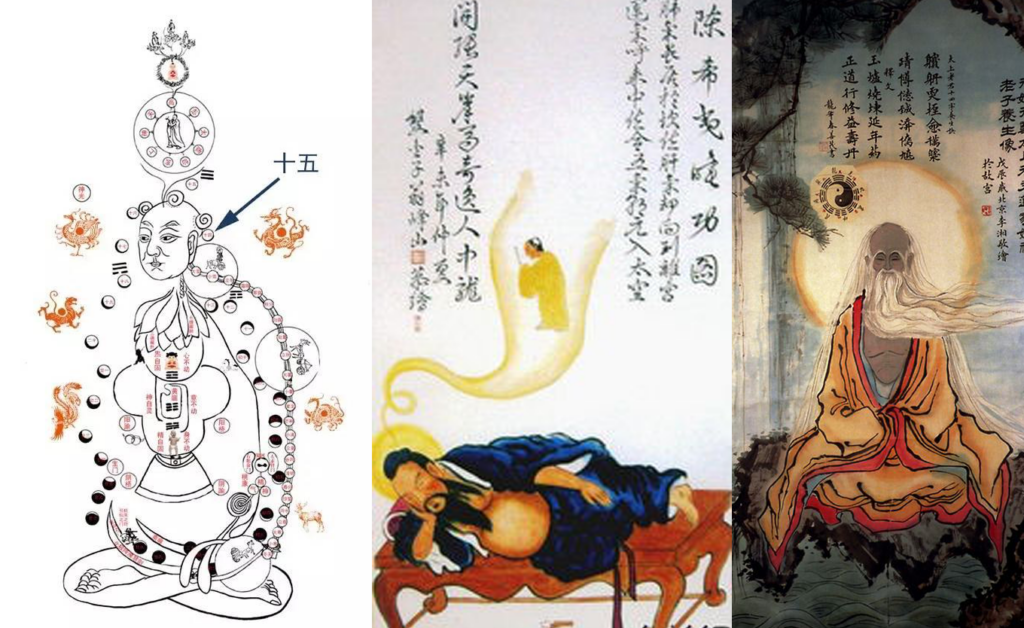
On the other hand, Taoists also embraced Dao Yin but with a different focus. They used it as a complement to their alchemical practices, turning it into a tool for the development of the three elixir fields and the practice of the Small Microcosmic Orbit and Great Microcosmic Orbit. Taoists sought spiritual immortality, and Dao Yin provided them with the necessary physical balance and mental concentration. Confucian scholars of body care also saw value in calisthenics. For them, it was a rational practice for health maintenance, and they strove to separate it from spiritual ideas. Calisthenics became a ritual that preserved health and promoted virtue, aligning with Confucian teachings of harmony of thought and will.
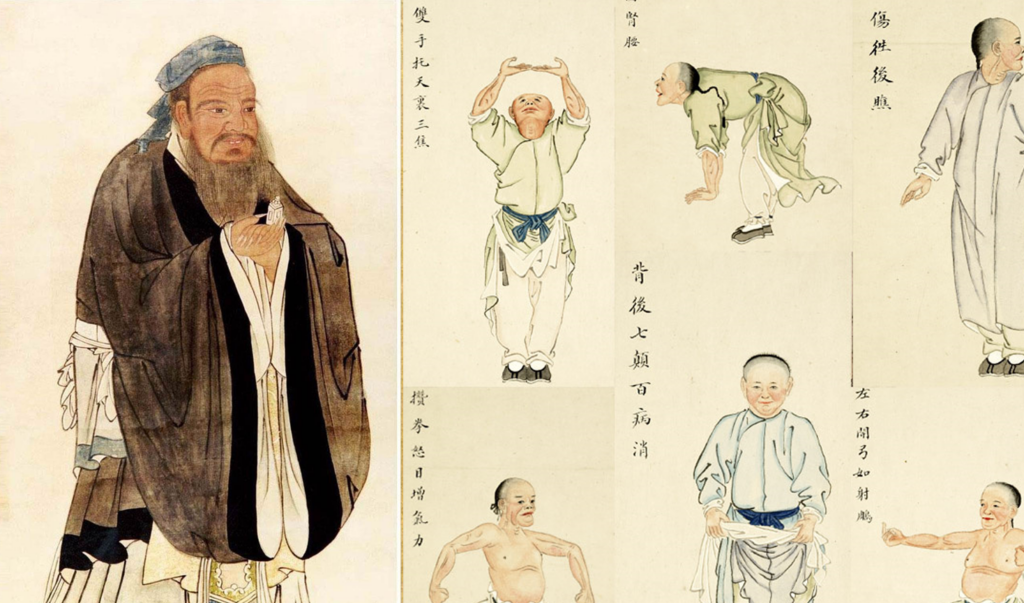
During the Song dynasty, Confucian scholars promoted health care manuals that became an integral part of the educated classes’ lives. Calisthenics became a tool for cultivating virtue and maintaining social order, in accordance with Confucian ideas of personal harmony and ethics. The path of calisthenics continued its evolution, with each tradition adapting it to its own goals. While Buddhism and Taoism kept their knowledge within temples, the Confucian school became the primary disseminator of Dao Yin among the population. Their motto was clear: “Preserve health to govern the country and pacify the world.” Thus, calisthenics spread across all social classes, nurturing both the body and soul of Chinese society.

During the Ming dynasty, which began around 1368, Chinese calisthenics underwent a significant change. It was during this time that the practice of Dao Yin became even more integrated into Chinese culture. Stretching and exercise movements were combined with breathing techniques and meditation, resulting in a comprehensive form of physical training. This was particularly beneficial for martial artists, as gentle calisthenics perfectly complemented their rigorous martial training. The combination of physical strength and mental focus became a powerful tool for enhancing fighters’ capabilities. This allowed them to improve their agility, endurance, and balance, making them more formidable warriors.

During the Qing dynasty, which began around 1644, Dao Yin was introduced as a complementary practice in various religious sects. Each of these sects had its interpretation and approach to Dao Yin, leading to the diversification of this ancient discipline. During this period, Dao Yin also merged with massage and self-massage techniques, adding another dimension to health care and body-mind harmonization. In this way, three major branches of Dao Yin emerged and gained popularity among the people, no longer affiliated with religious or philosophical beliefs: the Confucian variant, the Buddhist variant, and the Taoist variant. People began practicing it without any religious or philosophical affiliation.
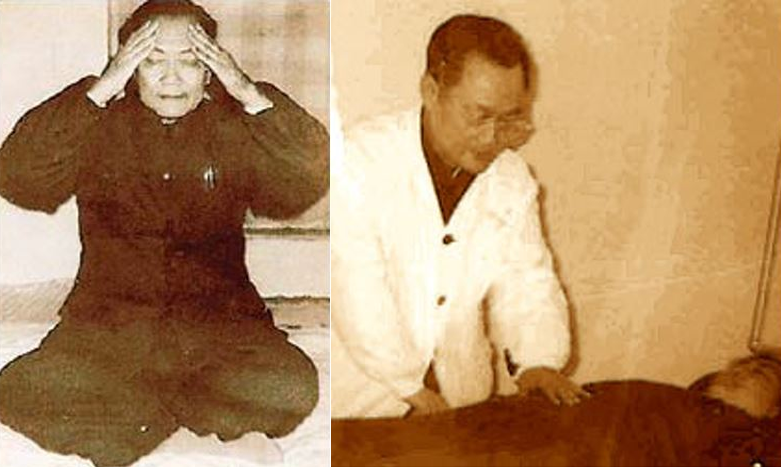
In the mid-20th century, between the 1940s and 1950s, the mainland Chinese government took steps to unify and simplify all Dao Yin techniques and exercises. They established strict control over access to this knowledge but simultaneously promoted its teaching in state rehabilitation centers, universities, and hospitals. In 1949, Professor Liu Gui Zhen, with the government’s support, adopted the name “Qi Gong” or “vital energy training” as the official name for all simplified Dao Yin techniques. However, since 1999, the Chinese government has attempted to dissociate Dao Yin or Qi Gong from spiritual practices, even going as far as banning schools like Falun Gong, which taught the original Dao Yin technique.
Despite these challenges, today approximately 200 million people throughout the country practice some form of Dao Yin or Qi Gong as a powerful tool for maintaining health and harmony in their lives. And so, through the centuries, Chinese calisthenics transformed from a simple dance into a comprehensive exercise practice that reflected the beliefs and values of diverse philosophical traditions. Each of these traditions adopted it to achieve their unique goals, a testament to how the human body can become a bridge to inner harmony and spiritual enlightenment through calisthenic methods.
“Unlock Your Potential! Free Month of Classes at Hun Yuan Pai”
Attention to all those interested in learning and training physical, philosophical, and spiritual disciplines to improve their physical and mental well-being! Hun Yuan Pai School is excited to offer a full month of free classes for you to experience everything we have to offer. During this trial month, you’ll have unlimited access to all our activities, from Tai Chi and Qi Gong to self-defense classes and meditation. Our experienced instructors will be there to guide you every step of the way, helping you explore and master these ancient Chinese disciplines. Take advantage of this unique opportunity to discover the benefits of training in physical, philosophical, and spiritual disciplines and how they can transform your life. After the free month of classes, each class has a cost of $10. However, we want to make sure you have the chance to experience everything we offer before committing financially. Therefore, we encourage you to make the most of your free month of classes and discover the path to greater health, vitality, and inner peace. It’s important to note that at Hun Yuan Pai School, we do not require you to sign long-term contracts. You simply pay for each class you take, giving you flexibility and freedom to tailor your schedule to your needs and commitments. Don’t miss this opportunity to start your journey towards a better self! Join Hun Yuan Pai School today and discover everything internal martial arts have to offer. We welcome you with open arms to help you reach your wellness and personal development goals.
